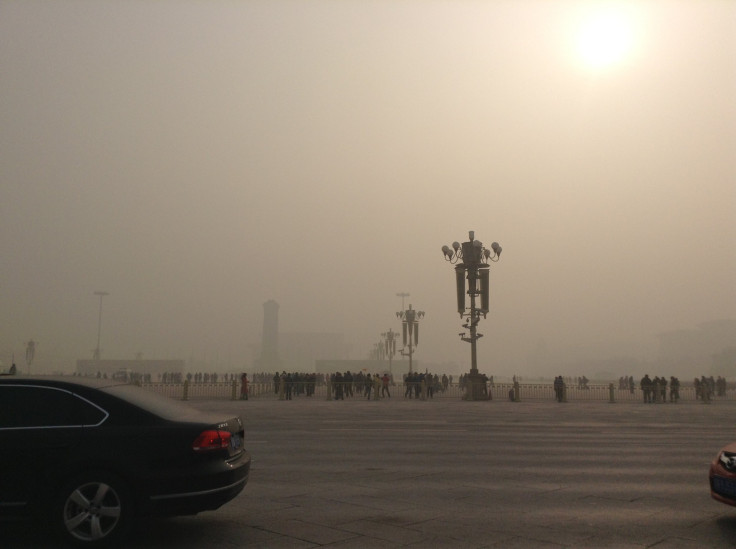China 'Outsources' CO2 Emissions: A Temporary Plan That Will Likely Hurt Later

China’s mega-cities like Shanghai and Beijing have made headlines because of the dangerously high levels of pollution shrouding their skylines. But in an effort to reduce industrial emissions, these wealthy, coastal provinces have started importing more goods from less-developed areas of China.
According to a study published in the Proceedings of the National Academy of Sciences, China has begun within its borders a unique practice previously seen only between a developed nation and a developing nation. China’s imbalanced growth profile -- that is, the rapid advancement of the largest metropolitan areas versus the economic stagnation in poor, rural regions -- has created an environment where China is able to domestically “outsource” its carbon dioxide (CO2) emissions.
Or, to put it another way, as EurekaAlert noted, this accounting of CO2 consumption is allocated to the provinces “where products are ultimately consumed, rather than simply focusing on where emissions occur.” As a result, factories and production facilities are being gradually moved to the poorer, developing parts of the country. “Recent studies have shown that the high standard of living enjoyed by people in the richest countries often come at the expense of CO2 emissions produced with technologies of low efficiency in less affluent, developing countries,” the study said. “Less apparent is that this relationship between developed and developing can exist within a single country’s borders.”
The Guardian reported that China and the U.S. are the world’s two largest hydro-fluorocarbon (HFC) emitters. HFCs are used in cooling systems like air conditioning and refrigeration and are known to be an extremely damaging greenhouse gas, contributing significantly to climate change. Instead of cutting down CO2 emissions, China resorted to outsourcing production from bigger, wealthier provinces with stricter CO2 regulations, to less-developed provinces with more relaxed CO2 protocols.
Laixiang Sun, a University of Maryland researcher who co-authored the study, told Eureka: "China has set emissions targets which are more stringent in affluent coastal provinces than in less-developed interior provinces. This may reduce emissions in one region, but in China as a whole, you find CO2 emissions continue to increase, because the polluting factories move into the less-developed regions."
According to the study, wealthy cities and provinces like Shanghai and southern Guangdong province were outsourcing as much as 50 percent of emissions created by products they consumed. In some regions here, as much as 80 percent of emissions were outsourced. It seems, however, the plan was not entirely effective in lowering the nation’s greenhouse gas emission target as a whole. Because of inefficient, antiquated technology that relies largely on coal-burning fuel in poorer regions of the country that are being overwhelmed with production, emissions for the nation as a whole still remains at staggering levels.
“The tragedy of this is that the easiest and cheapest cuts in emissions are in these provinces in the interior where the technologies are antiquated and with even slight improvements could be much, much cleaner,” Steven Davis, a University of California-Irvine professor and lead on the study, told the Guardian. Davis also says that the outsourcing strategy is not sustainable and could also have additional, unintended consequences on public health and society. China’s environmental ministry released its annual report last week characterizing the nation’s air, land and water quality situation as “grim.” “The result is it’s going to cost them more and perpetuate inequality with that country [between poor and rich provinces]. They are going to be paying more for every ton of CO2 reduced than they need to be,” Davis said.
© Copyright IBTimes 2025. All rights reserved.






















